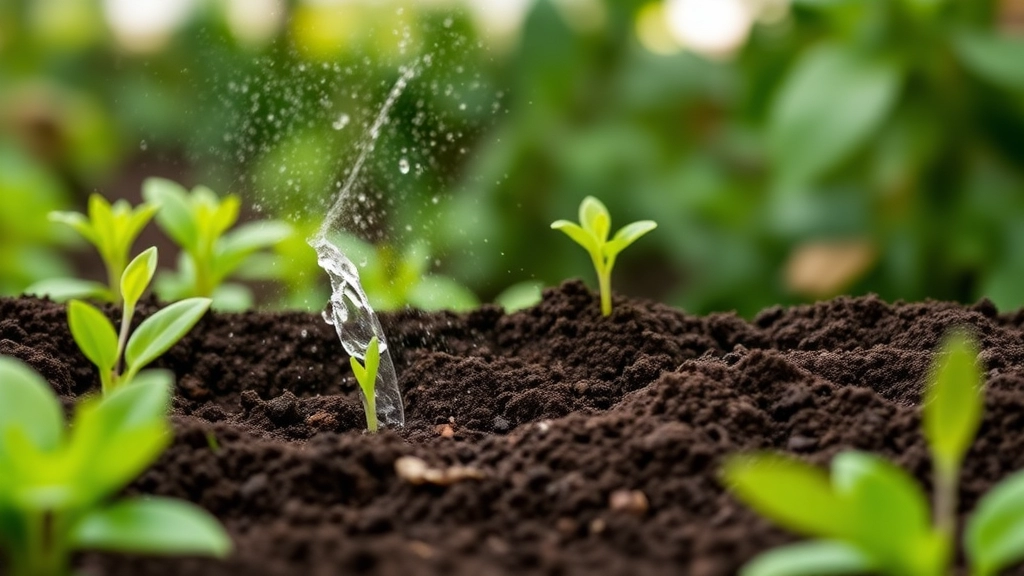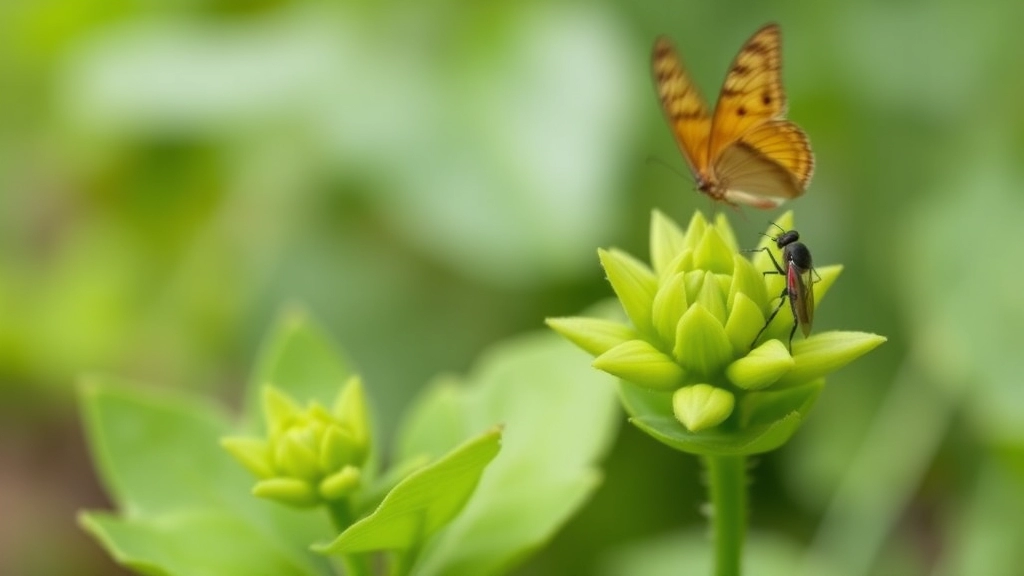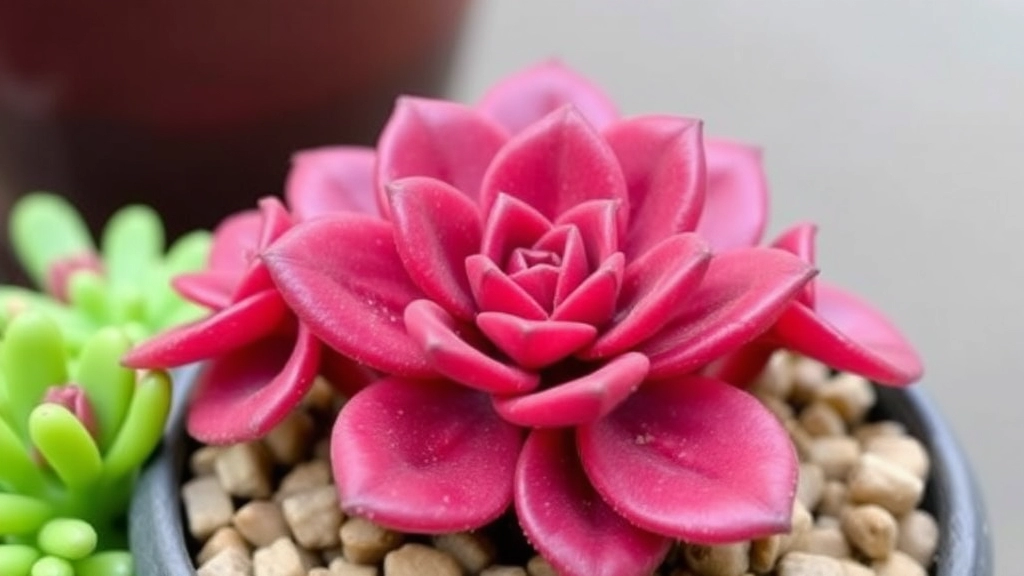Kalanchoe Chocolate Soldier Succulent
If you’re a fan of unique succulents, the Kalanchoe Chocolate Soldier Succulent is a must-have for your collection. With its fuzzy, velvety leaves edged in brown, this plant is not only visually striking but also relatively easy to care for. Let’s dive into the optimal growing conditions to keep your Chocolate Soldier thriving.
Optimal Growing Conditions
First things first, ensure your Kalanchoe Chocolate Soldier gets plenty of bright, indirect sunlight. Too much direct sun can scorch its leaves, while too little can make it leggy. Watering is crucial—allow the soil to dry out completely between waterings to avoid root rot. A well-draining soil mix is essential for healthy growth.
More Care Tips
Stay tuned as we explore more care tips, including propagation methods and pest management.
Optimal Growing Conditions for Kalanchoe Chocolate Soldier
Are you struggling to find the right environment for your Kalanchoe Chocolate Soldier? This succulent thrives under specific conditions that can make all the difference in its growth and overall health.
Ideal Light Conditions
Kalanchoe Chocolate Soldier loves bright, indirect light.
- Location: Place it near a south or east-facing window.
- Duration: Aim for about 6 hours of light daily.
- Tip: Too much direct sunlight can scorch its leaves, while too little can hinder growth.
Temperature and Humidity
This plant prefers a warm environment.
- Temperature Range: Ideally, keep it between 18°C to 24°C (65°F to 75°F).
- Humidity: Average household humidity is usually sufficient; avoid overly humid conditions.
Potting and Location
Choosing the right pot and location is crucial.
Watering and Soil Requirements for Healthy Growth

So, you’ve got your Kalanchoe Chocolate Soldier, and now you’re wondering, “How do I keep this beauty thriving?”
Let’s dive into the watering and soil needs that’ll set your plant up for success.
Watering
First off, Kalanchoes are succulents, which means they store water in their leaves.
- Frequency: You don’t want to drown your plant. Water it every 2-3 weeks, allowing the soil to dry out completely between waterings.
- Signs of Thirst: If the leaves start to look wrinkled or shriveled, it’s time for a drink.
- Overwatering Alert: Yellowing leaves or a mushy stem? That’s a red flag you’re giving it too much water.
Soil
Now, let’s talk soil.
- Type: A well-draining cactus or succulent mix is ideal. You can even make your own by mixing regular potting soil with sand or perlite.
- pH Level: Aim for a slightly acidic to neutral pH (around 6.0 to 7.0). This helps your Kalanchoe absorb nutrients better.
- Potting: Make sure your pot has drainage holes. Standing water can lead to root rot, and trust me, that’s a nightmare you want to avoid.
After ensuring your Kalanchoe Chocolate Soldier thrives in optimal conditions, you may want to expand your collection or share this beautiful plant with friends. Propagation is an exciting and rewarding process that can be done through various methods: leaf cuttings, offsets, and seeds.
### Leaf Cuttings
One of the simplest ways to propagate your Kalanchoe is through leaf cuttings. This method is not only easy but also highly effective.
– **Choose a Healthy Leaf**: Select a mature, healthy leaf from your plant.
– **Cut and Dry**: Use a clean, sharp knife to cut the leaf. Let it dry for a few hours to form a callus on the cut edge.
– **Planting**: Place the callused end into well-draining soil, ensuring it’s buried about an inch deep.
– **Water Sparingly**: Mist the soil lightly; avoid overwatering to prevent rot.
– **Light and Patience**: Place the pot in bright, indirect light and wait for roots to develop, which can take a few weeks.
For a more detailed guide on this method, you can check out our [step-by-step guide on Kalanchoe leaf propagation](https://planthq.org/kalanchoe-leaf-propagation-stepbystep-guide/).
### Offsets
Offsets, or “pups,” are small plants that grow around the base of the parent plant. They are another excellent way to propagate your Kalanchoe.
– **Identify Offsets**: Look for small rosettes emerging from the soil around the main plant.
– **Separate Carefully**: Gently pull the offset away from the parent plant, ensuring some roots are attached.
– **Replant**: Place the offset in its own pot with well-draining soil.
– **Water and Care**: Water lightly and provide bright, indirect light until it establishes itself.
If you are interested in learning more about caring for Kalanchoe offsets, our [complete guide to growing Kalanchoe Pink Butterflies](https://planthq.org/complete-guide-to-growing-and-caring-for-kalanchoe-pink-butterflies/) offers valuable insights.
### Seeds
While less common, propagating Kalanchoe from seeds is also an option for those who enjoy a challenge.
– **Seed Sourcing**: Obtain seeds from a reputable supplier or collect them from your existing plant.
– **Prepare Soil**: Use a seed-starting mix that drains well.
– **Sow Seeds**: Scatter seeds on the surface of the moist soil and lightly press them in.
– **Humidity and Light**: Cover the tray with plastic to retain humidity and place it in bright, indirect light.
– **Germination**: Keep the soil moist but not soggy; germination can take a few weeks.
By mastering these propagation techniques, you can easily multiply your Kalanchoe Chocolate Soldier. Each method has its charm and can be chosen based on your preference and available resources.
Managing Common Pests and Diseases

As we explore the care of Kalanchoe Chocolate Soldier, it’s essential to address the potential threats from pests and diseases that can hinder its growth.
Common Pests to Watch For
Kalanchoe plants can attract a few unwelcome guests. Here are the most common pests you might encounter:
- Aphids: Tiny, soft-bodied insects that suck sap from the leaves, leading to wilting and stunted growth.
- Mealybugs: White, cottony masses found in leaf axils or on stems, causing leaf yellowing and drop.
- Spider Mites: These tiny arachnids create fine webbing and can cause leaf discoloration.
- Scale Insects: Small, brown or white bumps on leaves and stems that can weaken the plant.
Signs of Disease
In addition to pests, Kalanchoe can also suffer from diseases. Keep an eye out for:
- Root Rot: Often caused by overwatering, this leads to mushy roots and wilting leaves.
- Powdery Mildew: A white, powdery fungus that develops on leaves, typically due to high humidity and poor air circulation.
Effective Management Strategies
To keep your Kalanchoe Chocolate Soldier healthy, consider these management strategies:
- Regular Inspections: Check your plant weekly for any signs of pests or disease.
- Neem Oil: A natural pesticide that can effectively control pests like aphids and mealybugs.
- Insecticidal Soap: Useful for treating infestations without harming the plant.
- Proper Watering: Ensure adequate drainage to prevent root rot; allow the soil to dry out between waterings.
- Good Air Circulation: Position your plant where it can benefit from airflow to reduce humidity and prevent diseases like powdery mildew.
Prevention is Key
To prevent pests and diseases, maintain a clean growing environment. Remove any dead leaves and debris, and avoid overcrowding your plants.
Seasonal Care: Adjusting Light and Water for Winter Dormancy
As we transition into the winter months, many plant enthusiasts wonder how to keep their Kalanchoe Chocolate Soldier thriving.
During winter dormancy, this succulent requires a shift in care to ensure it remains healthy and vibrant.
FAQs on Kalanchoe Chocolate Soldier Succulent
How often should I water my Kalanchoe Chocolate Soldier?
Frequency: Water your Kalanchoe Chocolate Soldier every 2-3 weeks. Make sure the soil dries out completely between waterings to avoid overwatering.
What type of soil is best for Kalanchoe Chocolate Soldier?
Type: Use a well-draining cactus or succulent mix. You can also create your own mix by combining regular potting soil with sand or perlite.
How can I tell if my Kalanchoe Chocolate Soldier needs water?
Signs of Thirst: If the leaves start to look wrinkled or shriveled, it’s time to water your plant.
What are the signs of overwatering my Kalanchoe Chocolate Soldier?
Overwatering Alert: Yellowing leaves or a mushy stem indicate that you are overwatering your plant.
What pH level should the soil have for optimal growth?
pH Level: Aim for a slightly acidic to neutral pH, around 6.0 to 7.0, to help your Kalanchoe absorb nutrients effectively.
What are common pests that affect Kalanchoe Chocolate Soldier?
Common pests include aphids, mealybugs, spider mites, and scale insects. Regular inspections can help you catch these pests early.
How can I manage pests on my Kalanchoe Chocolate Soldier?
Effective Management Strategies: Use neem oil or insecticidal soap to control pests. Regular inspections and maintaining good air circulation also help.
What diseases should I watch out for?
Common diseases include root rot, caused by overwatering, and powdery mildew, due to high humidity and poor air circulation.
How can I prevent root rot in my Kalanchoe Chocolate Soldier?
Proper Watering: Ensure your pot has drainage holes and allow the soil to dry out between waterings to prevent root rot.
How can I improve air circulation for my Kalanchoe Chocolate Soldier?
Good Air Circulation: Place your plant in a location where it can benefit from airflow to reduce humidity and prevent diseases like powdery mildew.
What are some preventive measures for pests and diseases?
Prevention is Key: Maintain a clean growing environment by removing dead leaves and debris. Avoid overcrowding your plants to reduce the risk of pests and diseases.
References
-
How to Grow Kalanchoe Succulents
-
Common Kalanchoe Pests: How To Treat Bugs On Kalanchoe Plants
-
Kalanchoe: How to Grow and Care for Kalanchoe Plants
